My love for wood firing goes back to my second year of Bachelor studies in The Estonian Academy of Art, where I had the opportunity in 1997 to participate in the inaugural firing of Kersti Laanmaa’s Bourry box style wood kiln. It was a lightbulb moment. I felt as if I had arrived home. Participating in the entire process – from preparing the wood and loading the kiln to taking the tiring night shifts – there was a level of engagement that suited me. Seeing the cumulative record of the flame on each piece at the unloading – I realized – this was an opportunity for a life long dialogue, during which I could continuously grow and evolve.
The winding road of life eventually took me and my family to Seagrove, NC, where, in 2011 we decided to build our own Bourry box. We organized an international kiln building workshop for students from The Estonian Academy of Art and East Carolina University, (where I earned my Masters Degree in Ceramics). My former teacher and mentor Andres Allik led the workshop and thus, on November 11th, 2011 our beautiful, 40 cubic foot, “sports car” Blue Hen kiln was built.
“I learned early on to be present and quiet enough to hear what the kiln is telling me”
At the time I was a mother of two young children and needed to balance my studio practice with homelife and all the activities with the kids, so it was important to have a reasonable size kiln that would be manageable for one person or a small crew.
Getting to know a new kiln is like entering a relationship. You begin a dialogue, build vocabulary back and forth, one firing at a time. Each kiln offers varying possibilities but also has its limits. The nature of the smallish Bourry Box is that the firings are relatively short compared to many other kiln styles. There is a powerful draft pulling the flame through the kiln. The laws of physics won’t allow the ash to reach the higher and further corners of the kiln. Ash deposits are quite literally dumped on the first few layers of works placed behind the firebox.
The length of the firing allows for some flashing, light speckling of ash, but for the most part, unglazed, undecorated work can result in rather uniformly (boring) brown pots. My quest for variation in color, movement and excitement on the surfaces has led me to use many different clay bodies. I love to explore the different characters and feel of different clay bodies from translucent porcelain to dark gritty local clays from STARworks Ceramics. I layer my work with slips, decorative drawings and little pops of painted glaze. I constantly experiment with new combinations of those elements. This keeps me engaged, looking forward to each firing.
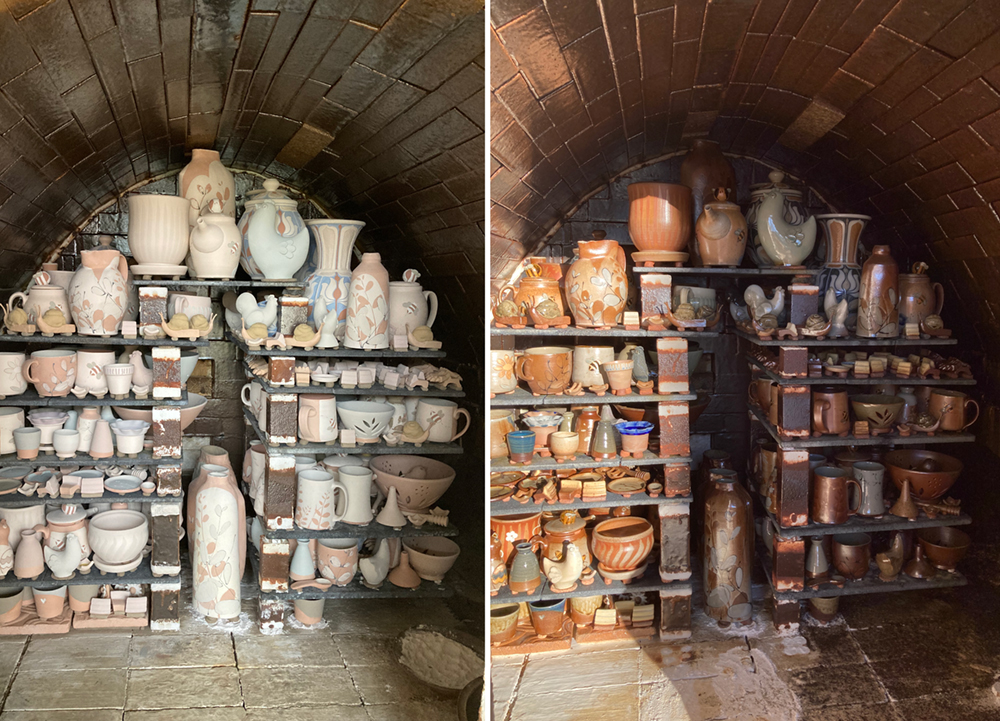
Efficiency, pragmatism and being frugal are parts of my core being. I find that short firings, anything under 24 hrs, tend to leave the work a bit “unripe” yet it doesn’t seem efficient to fire small kilns for longer periods, considering the amount of work that fits in them. Adding a small amount of salt or soda towards the end of the firing “matures” the work to my personal preference, introduces a light sheen or occasional areas of recognisable salted surfaces – adding yet more layers and interest. Too much, and the surfaces would get obliterated, the color of glazes diluted. 3 lbs, a “pinch of salt” seems to be just enough.
To this core principle of pragmatism – our source of wood is also essential. Over the years I have purchased a few truck loads of cord wood, but in the past 7-8 years have exclusively settled on using waste wood from a small local company. It’s mostly poplar, not a very popular wood amongst Seagrove woodfire potters. However, other than the cost of gasoline to transport the bundles home in our pick up truck, this source of wood is free to me and it keeps it out of the landfill. We augment the poplar strips with pine and small amount of hardwoods from our friends and neighbors, brought down by storms.
Another layer in the pragmatism is to fire in a way that allows rest. Even though I no longer fire my kiln alone and have opened it up to share with younger potters in the area, we are sticking to the schedule I settled on during my years of firing alone.
We get the kiln loaded and the door bricked up usually by 5pm the first day. A small fire is started and maintained in the chimney for the first hour or so. At the same time a fire is started in the secondary (lower air holes) of the firebox. We continue to fire until 9-10pm when the pyrometer usually reads around 600-700 oF. At that point the firebox gets filled to the brim with larger hardwood chunks, the dampers and all the air holes are closed and the potter gets a good night’s sleep while the logs smolder and the heat slowly soaks into all corners of the kiln.
6 am the next morning the kiln is usually in the 450 F range with enough red coals in the firebox to get the fire started again easily. Dampers get teased open little by little within the next 30 minutes to an hour, until the temperature is steadily climbing again and we continue to fire until at least most of the cone 10s are down, usually no later than 11pm and often earlier.
Of course there are lots of details to pay attention to when loading the kiln and during the firing. They play a big role and can determine a “good” or “bad” firing. Perhaps in another article!
I learned early on to be present and quiet enough to hear what the kiln is telling me – to keep a dialogue with wood and fire, so that together we craft a language that speaks of a time and place and our collaboration. 57 firings later, the conversation is still ongoing.
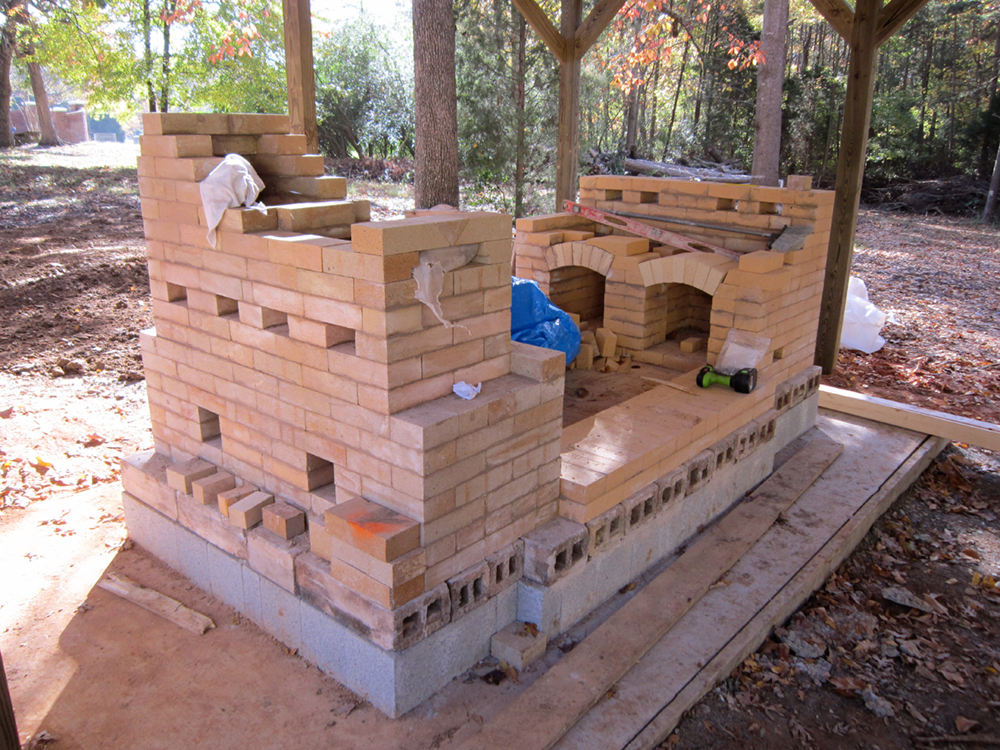
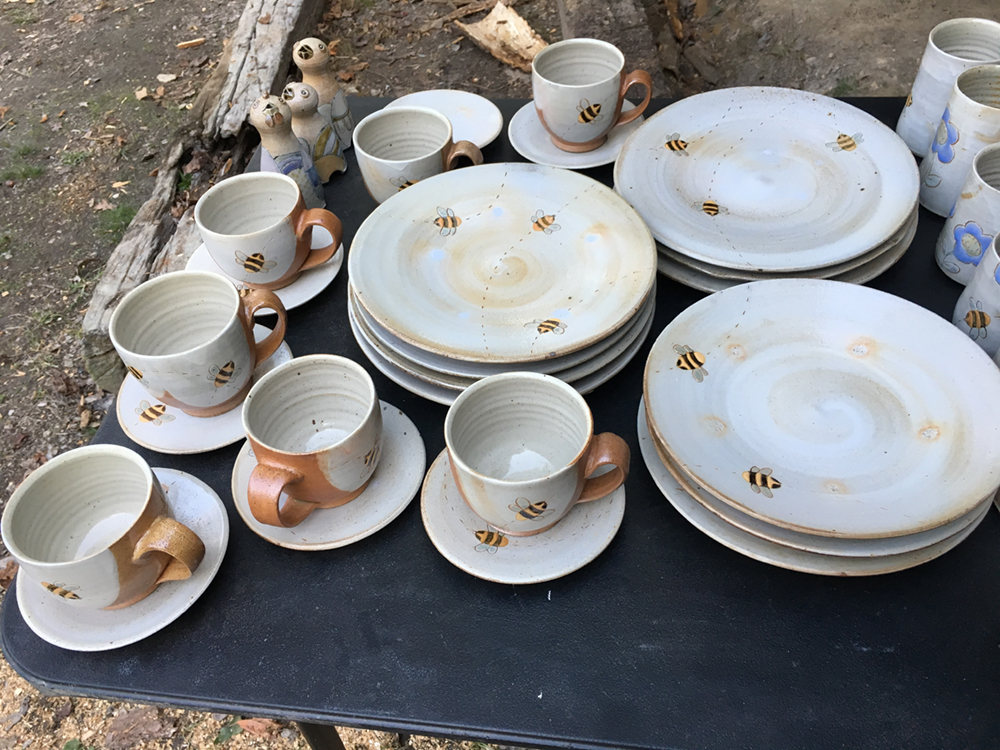
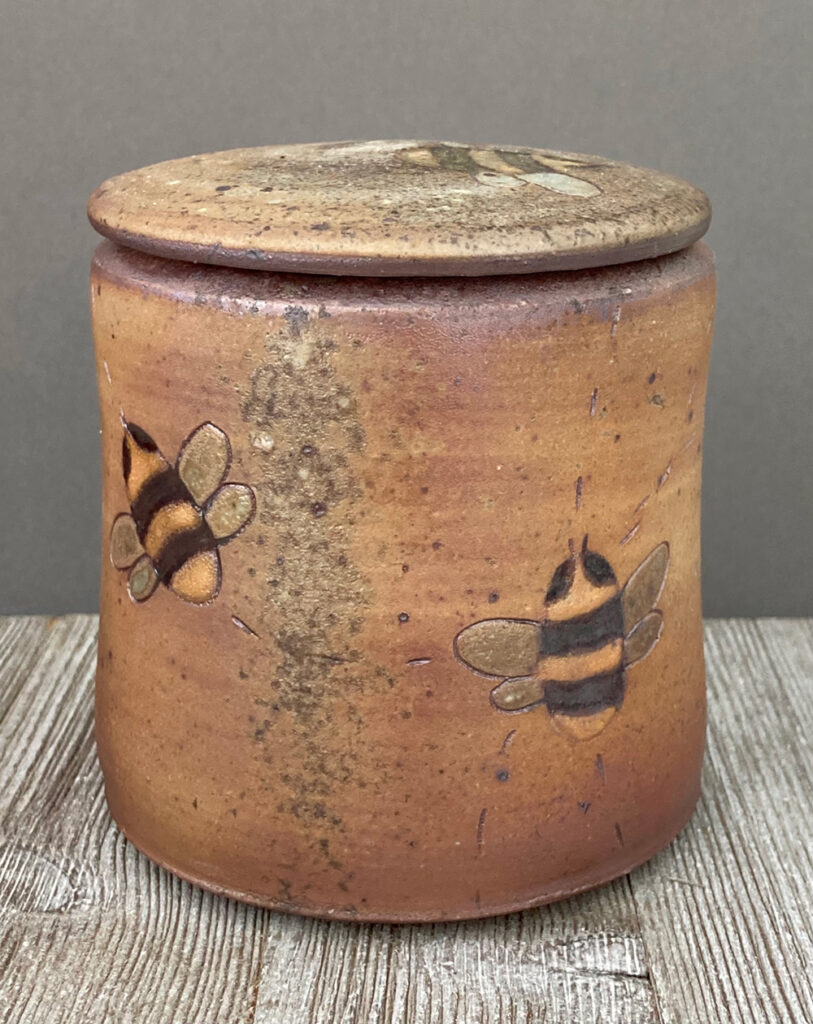
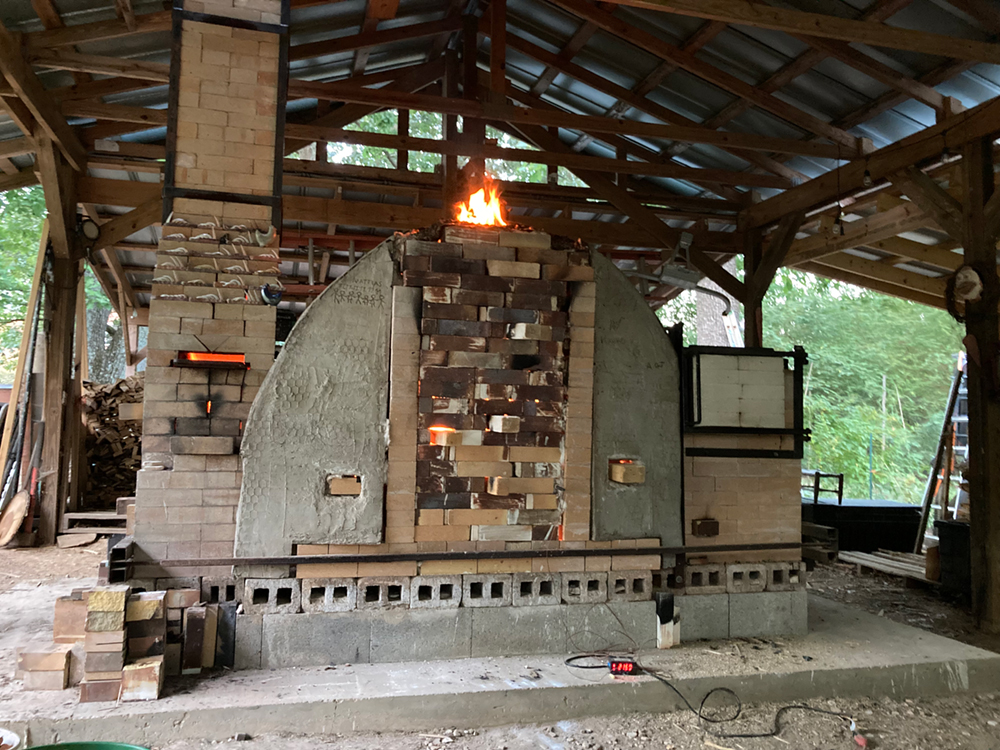
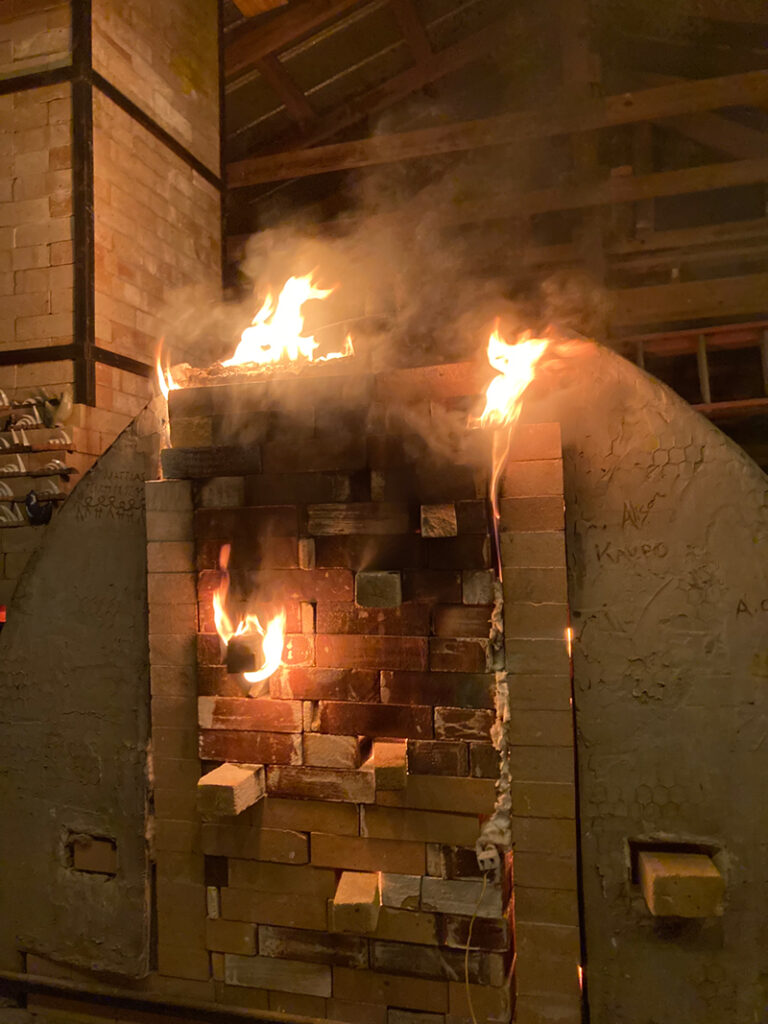
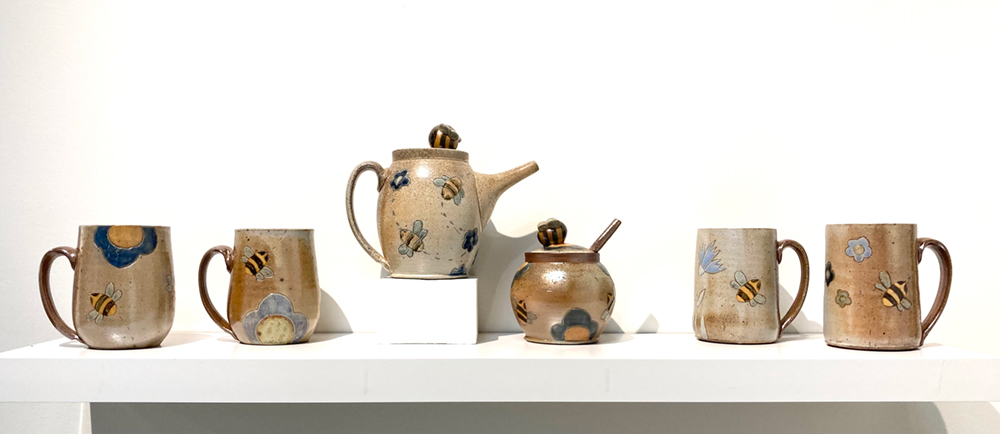
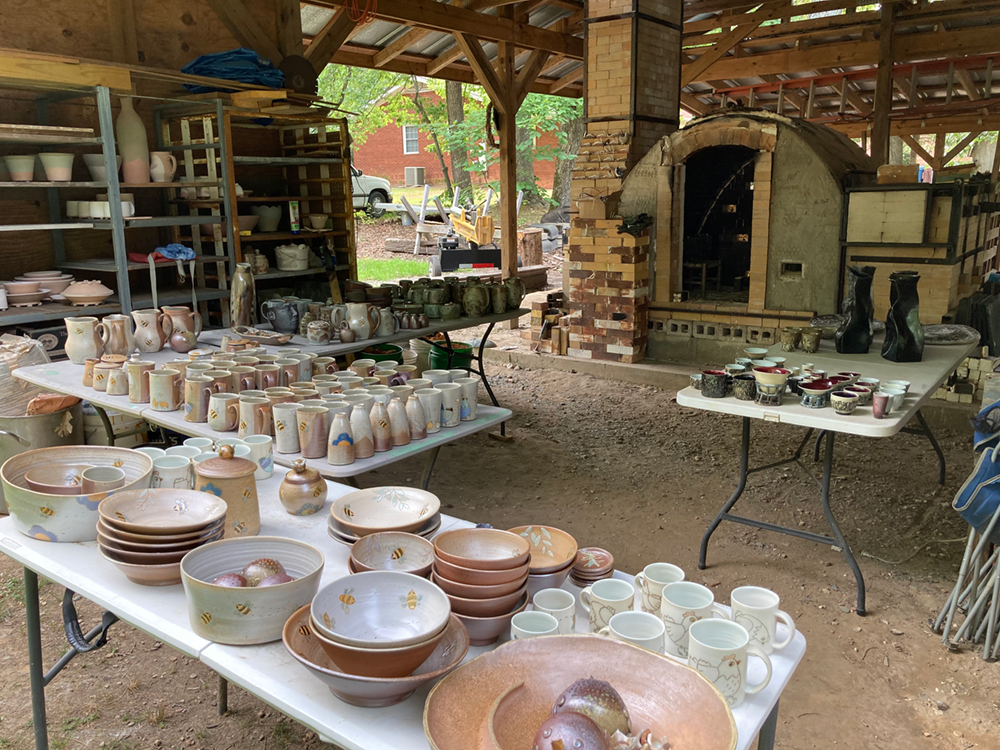
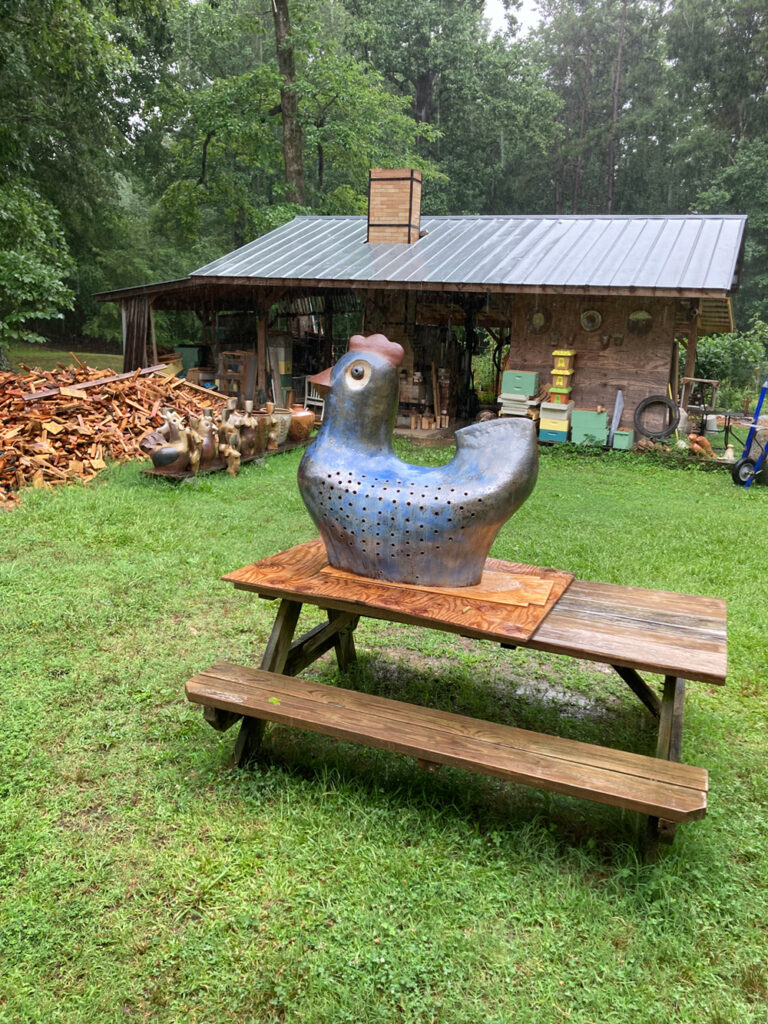
Blue Hen Pottery is the partnership of Adam Landman and Anne Pärtna
More information: www.bluehenpottery.net